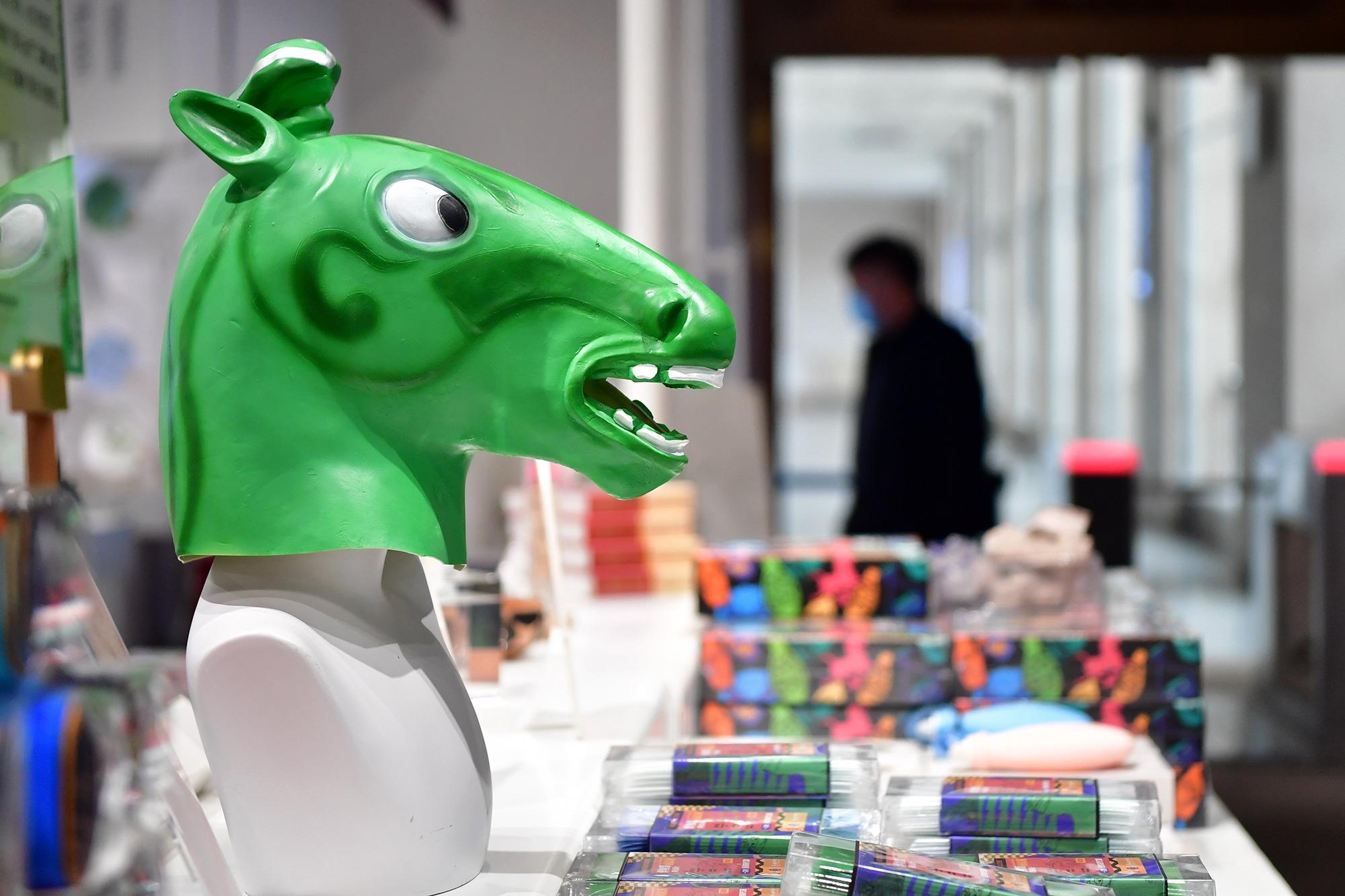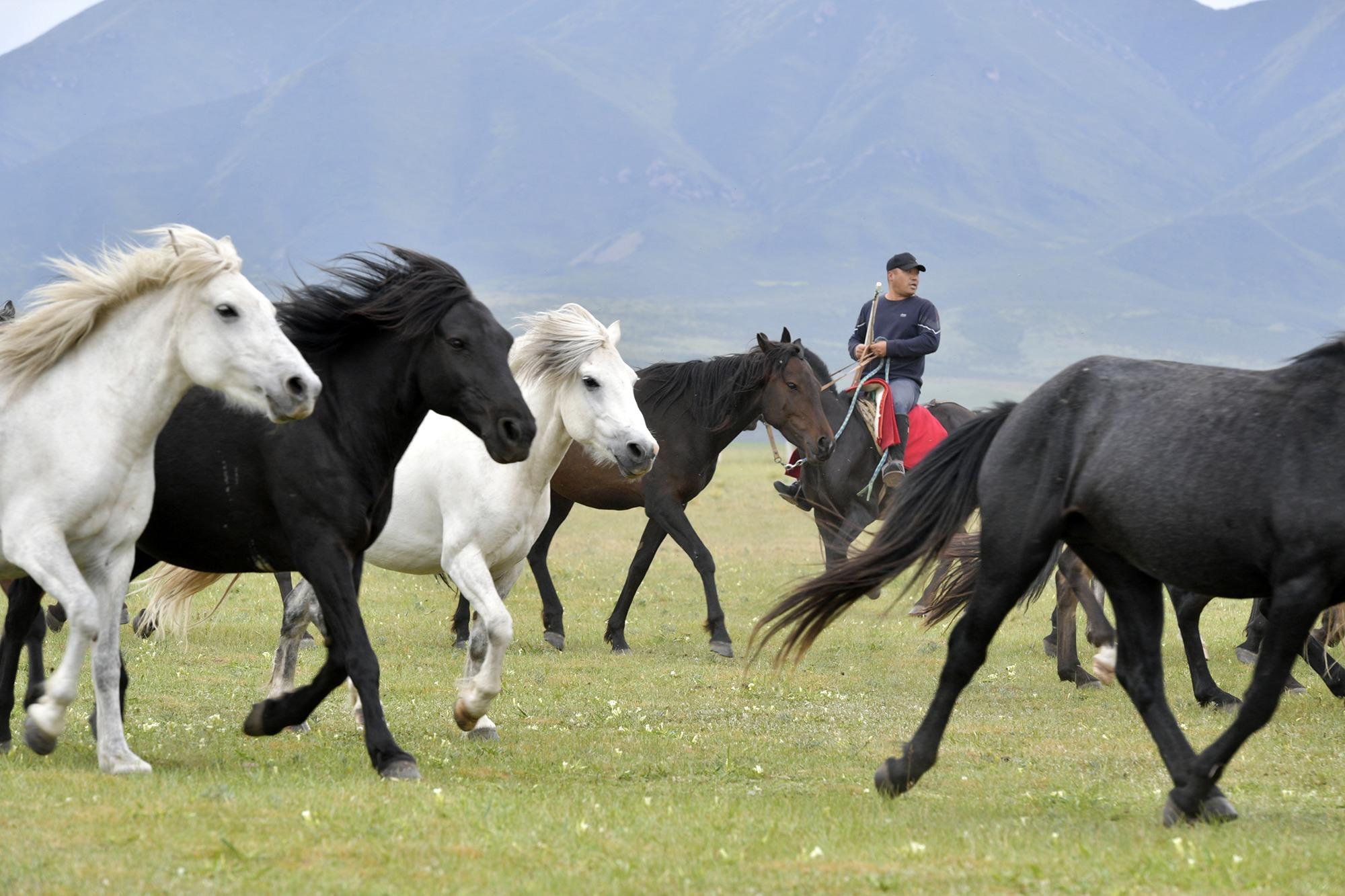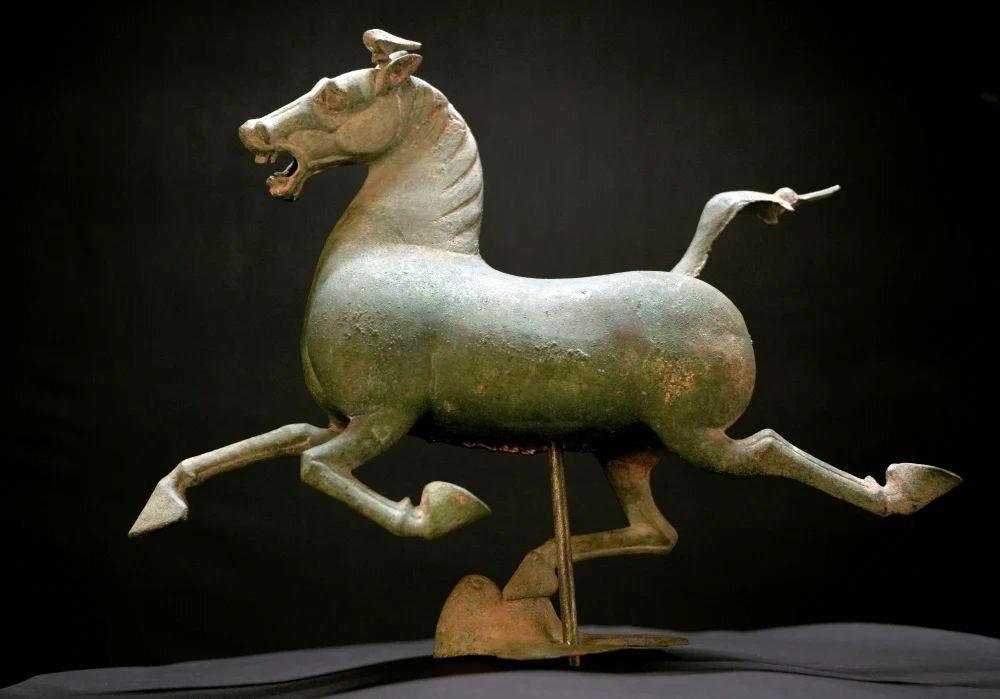The province has long been famous as a meeting point for Eastern and Western cultures. Zhang Yi and Shi Xuefan report from Lanzhou.
 A green horse head mask based on the bronze galloping horse, a cultural relic unearthed in Gansu province, on sale at the Gansu Provincial Museum in Lanzhou on Jan 4, 2024. (PHOTO / XINHUA)
A green horse head mask based on the bronze galloping horse, a cultural relic unearthed in Gansu province, on sale at the Gansu Provincial Museum in Lanzhou on Jan 4, 2024. (PHOTO / XINHUA)
The horse is a legendary animal in the northwestern province of Gansu, a key part of the ancient Silk Road that long witnessed exchanges between China and the West. Today, the animal is still winning people's hearts.
The latest favorite is a stuffed "green horse" toy that wears a big grin on its face and whose design is based on a national treasure unearthed in Gansu.
The toy's cute, goofy appearance has seen it gain great popularity among young people. Since it was launched in June 2022, nearly 100,000 have been sold, making the toy the best-selling souvenir at the Gansu Provincial Museum and encouraging people to learn the story behind the famous local cultural relic. The smiling toy stands on one leg, with an innocent wide-eyed bird under its hoof, replicating the posture and details of the relic, a bronze galloping horse that is displayed at the museum.
The bronze galloping horse, made during the Han Dynasty (206 BC-AD 220), was unearthed in the 1960s in a tomb in Leitai, Wuwei, Gansu. It is famous for being perfectly balanced as all its weight is supported by the thin rear right leg that rests on a flying swallow.
Also known as "the galloping horse treading on a flying swallow", its profile is printed on the Chinese tourism logo.
Jia Jianwei, director of the museum, said: "To illustrate the high speed of the horse, the designer showed one foot standing on the back of a fast bird in flight. The galloping horse is not a specific species, but an artwork that mixes the best features of various kinds of horse."
He added that the artifact was made at a time when different Western equine species were being bought and bred with local horses.
 Green horse stuffed toys on sale at the museum in Lanzhou, Gansu. (ZHANG YI / CHINA DAILY)
Green horse stuffed toys on sale at the museum in Lanzhou, Gansu. (ZHANG YI / CHINA DAILY)
Geography, climate
Throughout China's history, Gansu has been one of the key areas for horse breeding and trading as a result of its geography and climate. As such, the Shandan Army Horse-breeding Farm, the oldest royal horse farm in the world, is based in the province. It was founded sometime around 121 BC on the grassland of the northern slopes of the Qilian Mountains in Gansu's Zhangye city to breed horses for the army by mixing the genes of local and Western species.
In around 139 BC, Emperor Wudi sent a convoy headed by a man named Zhang Qian on a westward journey that eventually took them to Central Asia. One of Zhang's tasks was to look for suitable horses.
"A lot of cultural relics relating to horses have been discovered in Gansu. Horses hold great significance in the province and were considered regional deities during the Silk Road period," Jia said. Like the galloping horse, many cultural relics found in Gansu reflect the absorption and innovative development of Central and West Asian cultures, illustrating a spirit of openness and inclusiveness. Even before the ancient Silk Road, Gansu played an important role in cultural exchanges between East and West, and extensive trade was conducted using camels and horses, he added.
Situated on the legendary trade route, Gansu served as a crossroads for China and Central Asia. Good horses, monks and caravans traveling between various countries greatly accelerated cultural exchanges, making Gansu one of China's most culturally rich provinces.
Zhao Shengliang, head of Gansu's Dunhuang Academy, said that during the Silk Road period, Chinese and Western cultures met in Gansu for about 1,000 years.
"People from various nations lived in Dunhuang, and from the content of murals in the ancient Mogao Caves, we can see that people from different countries communicated with each other," he said.
To this day, people still talk about the Silk Road as well as the Tea Horse Road, another popular horseback trade route. As time passed, the sound of hoofs on the Silk Road gradually faded away, but now their spirit is being replicated by the Belt and Road Initiative.
 A herdsman drives horses at Shandan horse farm in Gansu on Aug 8, 2023. (PHOTO / XINHUA)
A herdsman drives horses at Shandan horse farm in Gansu on Aug 8, 2023. (PHOTO / XINHUA)
Great endurance
For more than 50 years from 1949, the year New China was founded, the Shandan horse farm was managed by the People's Liberation Army, which bred horses boasting supreme physical fitness and great endurance.
The farm now serves as a major facility where horses are bred and trained for racing and also equestrian competitions. Species are brought in from abroad to interbreed with the Shandan horses and improve their speed.
"My father was a herdsman, so I could ride a horse at age 6. The horses are like my own children," said Liu Guonian, 43, who has been breeding and herding horses at the farm for more than 20 years. "As the grassland environment improves, more people are visiting the farm, and our income is rising. In addition to horse breeding, local herders also work in the tourism industry."
Lin Wei-kang, a young person from Taiwan who visited the farm last year, said, "Standing on the grassland, I seemed to see the galloping military horses from ancient times, and I thought of those brave generals and soldiers."
 The bronze galloping horse at the Gansu Provincial Museum. (PHOTO / XINHUA)
The bronze galloping horse at the Gansu Provincial Museum. (PHOTO / XINHUA)
Bai Yihan, a middle school student from Shanghai, visited Gansu in July with her classmates to learn about Silk Road history and culture. "It was amazing to actually see the things I had learned about in textbooks," the 14-year-old said.
Legend has it that in Dunhuang, Emperor Wudi had a Tianma, or "heavenly horse" — an Akhal-teke, a fabled breed from Turkmenistan that is famous for its speed, endurance and intelligence. The horse's coat has a distinctive metallic sheen, which led to the nickname Golden Horses — as a result, he wrote Tianma Song, a poem that praises the horse's strength.
In 2014, a China-Europe freight train named Tianma sounded the whistle for its maiden journey from Wuwei in Gansu to Germany, carrying goods ranging from kitchen appliances to hardware fittings.
The journey signaled another first for the Belt and Road Initiative, which had been proposed by China a year earlier to improve connectivity and cooperation among countries. Trains pass through the Alashankou Port in the Xinjiang Uyghur autonomous region and the Georgian capital, Tbilisi, before finally arriving in Germany within 18 days. The nearly 9,000-kilometer journey takes the galloping "heavenly horse" 30 days less than traditional ocean transportation.
Contact the writers at zhangyi1@chinadaily.com.cn


